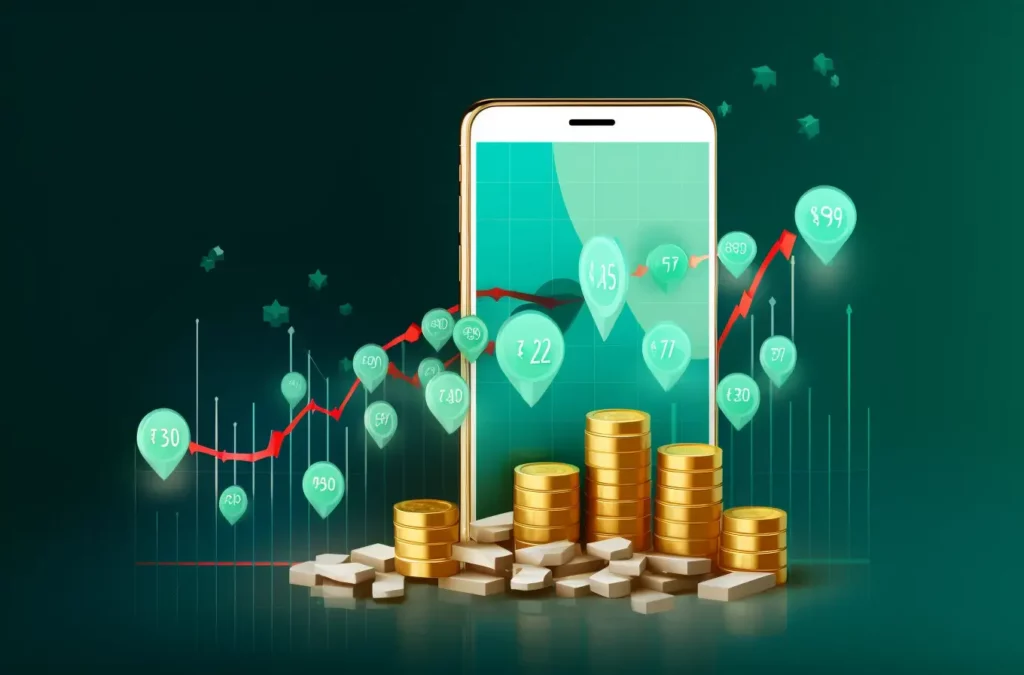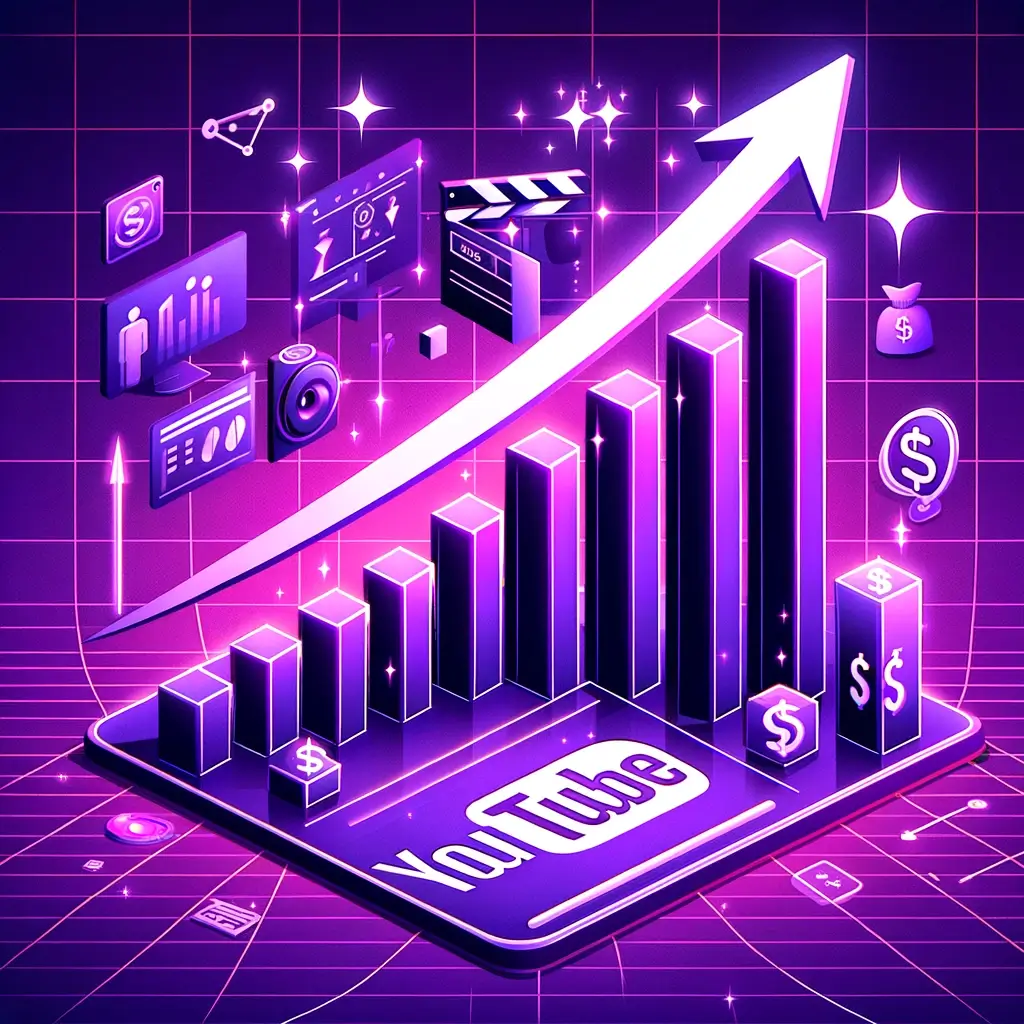Table of Contents
Introduction
Content – your digital legacy. A mix of ideas, experiences, and passion. But let’s be honest: bills don’t pay themselves, and unfortunately, grocery stores aren’t taking blog posts as payment (I wish they did, right?). Your stories, dreams, and hard work deserve more than virtual applause. So, let’s chat about monetization.
What is monetization? Who can implement it? How to monetize content?
Whether you wish to know the term, want to use your content to boost your product, or even aim to earn serious cash, we are here for you. In this post, we are delving into content monetization, exploring how you can transform your creativity into tangible dollars.
So, don’t let your creativity fade away with likes and shares. Let’s make your content work for you!
Keep reading…
What is Content Monetization?
Content monetization is turning your creative efforts into income. Whether you’re into video streaming, podcasting, or blogging, it’s about making money from the content you love to create. The beauty of it is that your reach isn’t limited, thanks to the global audience content creation, which allows you to make cash from people and brands worldwide on your work.

How To Monetize Content
When it comes to content monetization, there are two ways to it:
- Direct monetization with readers
- Third-party monetization
Direct Monetization — Direct link to success
Direct monetization stands out as a top-tier method for generating income from digital content due to its capacity to establish a direct rapport with your audience. This approach gives you complete control over your earnings.
The key avenues for making money directly from your readers involve charging a fee or requesting donations.
A prevalent and effective strategy within direct monetization is the premium content model. Platforms like Patreon and WordPress facilitate this approach, offering enhanced flexibility and enabling you to own your relationship with your audience without incurring commission fees. So…
How It Works: The premium content model restricts access to some or all of your digital content. To gain access, visitors must pay a membership fee, structured as a one-time payment or an ongoing subscription. That is how you earn direct cash from visitors. However, if you want to adopt a freemium approach, there is an option for this, too. Many sites offer this, granting visitors access to some content for free while requiring payment for full access. This strategic blend balances attracting a wider audience with free content and monetizing premium.
Third-Party Monetization: A Supplement
So, you know the primary source of income – the direct monetization strategy. But offering third-party monetization is excellent if you want to spice things up and earn some bonus cons. It is a complementary strategy to your primary direct monetization efforts. The approach demands allowing external entities to pay for access to the creator’s audience through various channels.
The Question arises: which channels?
- Display Ads: You let companies showcase their stuff on your platform. They pay based on how many eyeballs or clicks they get.
- Sponsored Posts: Businesses pay you to feature their content on your site. It could be reviews, articles, or promotions – whatever fits your audience.
- Affiliate Marketing: You promote products, and when people buy through your unique links, you earn a commission. Easy.
But, and there’s always a but. Remember, you are not the ship’s captain here. A balance is required to keep the ship floating, and so is with this monetization method. The key is to maintain a balance. Using third-party monetization can help you, but you can fall into the pit sometimes. A company you are working with may decide to cut back on ads, slash commissions, or shut down their affiliate program, leaving you hanging behind.
So, to keep the money flowing, build up a solid audience with your direct strategy, and if anything goes south with these third-party peeps, you’ve got a safety net. Your people will still be there, and you can weather the storm successfully.
Nevertheless, factually, combining both approaches proves beneficial and worthwhile in maximizing the monetization potential of your content.
Who Can Monetize Content?
Monetizing content is an option available to anyone. From a wide range of creators to traditional influencers, it is accessible to anyone. Simply put, anybody consistently producing and sharing content can embark on the monetization journey. This opportunity is particularly appealing if you are passionate about a specific niche, operate a blog, witness consistent engagement and follower growth, and have a social media channel or YouTube platform with regular traffic.
There are multiple ways to monetize your content. For example, photographers are selling their work and services, freelancers are marketing project management templates, investors are offering online courses, food bloggers are earning through PPC ads, and fitness influencers are profiting from product placements. The process is facilitated on platforms like YouTube and Facebook, where built-in tools enable monetization through PPC ads once engagement surpasses a set threshold.
If you possess expertise in a niche, bang over. Operate a content platform, gain substantial engagement, invest more time in your platform, and see content serve you as a lucrative monetization side hustle or even a full-time gig.
Note: Despite the vast potential for monetizing content, success hinges on understanding your niche, identifying high-engagement content, and strategizing for follower growth.
Suggested Reading: How Do Websites Make Money: Let’s Turn Clicks into Cash

6 Strategies for Content Monetization
Here comes the first-rate working strategies to monetize your content to the fullest.
Before we begin, don’t forget…
→ A Prerequisite: Exceptional Content
The foundation for successful content monetization lies in the creation of fantastic content. It is a task that requires meticulous attention to two key aspects:
- Uniqueness
- Quality
Uniqueness involves offering content that stands apart from the plethora of options available to your audience. This can be achieved through exploring new topics, adopting a distinctive tone, providing a fresh perspective, or experimenting with different mediums. The second comes quality, which is paramount to creativity. This demands well-researched and in-depth material, professional recording and editing for audio or video content, and error-free, eloquent writing for textual content.
Star Tip: Keep doing this consistently and talk to your audience. Build a group of loyal followers. Once you have that, you can start making money in different ways.
1 — Affiliate Marketing
Affiliate marketing is a dominant third-party content monetization strategy. By incorporating affiliate links in the content, you can increase your chances of earning commissions on products purchased facilitated through these links. However, to succeed, it is essential to choose a niche that aligns with affiliate marketing, ensuring your audience is interested in the products or services you promote.
The process involves creating content about a product, using a unique affiliate link to track user visits, and earning a commission upon completed purchases.
Affiliate marketing offers several advantages, allowing content creators to earn from products they genuinely care about, especially those likely to be purchased by their audience. Nonetheless, despite its merits, affiliate marketing comes with challenges. There is a risk of prioritizing content creation for affiliates over the audience’s interests, potentially diminishing engagement. Moreover, there is a chance that only a fraction of readers will click on affiliate links, and an even smaller percentage will make purchases. Further, some companies can unexpectedly alter commission rates, affecting income. Hence, there is a need for constant monitoring and updating affiliate links.
How to Monetize with Affiliate Marketing
To monetize content through affiliate marketing, join individual programs or affiliate networks. Next, align your niche with products that resonate with your audience. For instance, integrating affiliate programs related to software products is logical if your platform reviews software. Ensure your content meets high standards to gain affiliation through networks, allowing you to earn a percentage of referral sales. Also, for optimal results, scale your readership or viewership.
Affiliate Marketing Platforms
Prominent affiliate networks include:
2 — Subscriptions
Monetizing content through subscriptions is another prevalent method to opt for. A lot of well-known companies, such as Netflix, have generated millions in recurring revenue through subscription businesses worth $31 billion per year subscription business.
The approach entails that viewers pay to access the content–they value it enough to pay.
Subscribing to content has perks – you get to make money from folks who appreciate your work. Subscribers enjoy an ad-free, top-notch experience, showing they’re genuinely into what you create. But here’s the catch. If all your content is behind a paywall, you might miss out on people who don’t want to pay upfront.
And when you have a mix of paid and free content, it’s unpredictable; not everyone may be willing to chip in. Plus, subscriptions often bring in less cash per view than other ways of making money directly, like memberships. So, finding the right balance between being accessible and exclusive is vital for navigating these challenges and making the most for yourself.
Subscription Platforms
Let’s talk about the two main subscription models: paywalls and newsletters. Paywalls mean your audience has to pay before getting access, ensuring only those ready to pay to get through. Newsletters, somewhat similar, also ask for a subscription fee but shoot the content straight to your subscribers’ email inboxes.
How to Monetize with Subscriptions
To effectively monetize content through subscriptions, ensure you have a unique audience appeal or brand angle that justifies a subscription fee. Next, serve up something special. Your subscribers need to feel they’re getting value for their money. Whether it’s exclusive tips, deep dives, or premium products, make it something they can’t find elsewhere.
Moreover, establish a paywall on your content site or subscribe to a newsletter platform offering subscription features. It’s all about choosing what works best for your content and followers.
3 — Advertisements
Monetizing content through advertisements is a well-established avenue in the digital landscape, with global content marketing projected to reach $107 billion by 2026. Huge? Yes!
The fundamental concept is simple: attract an audience, and advertisers will pay to engage with them.
The ultimate advantage you gain is once your ad monetization is set up; it becomes a source of primarily passive income generated from the views you would be getting anyway. Most viewers are habituated to ads, making it an expected part of the content consumption experience. This approach allows you to create your desired content without being strictly tied to affiliate sales.
However, it’s crucial to consider potential downsides: ads can be distracting within your content, impacting the user experience. Moreover, unless you have substantial traffic, the earnings from ad platforms might be modest, typically ranging from $20 to $50 per 1,000 views.
How to Monetize through Advertisements
The process is easiest. Showcase a sponsor’s product in your content, and they pay you a set amount, no matter how much the product sells. But, finding sponsors might be a bit tricky as your content grows. But don’t worry; there are other ways to make money by joining ad networks, talking to sponsors for native ads, or meeting the requirements of social media platforms. These steps can help you begin earning through ads.
Advertising Platforms
If you want to monetize your content through advertisements, various platforms offer distinct opportunities. Ad networks like Mediavine or Ezoic require a monthly threshold of 50,000 page views. You can also approach sponsors directly for sponsored native ads or consider joining influencer networks like CreatorIQ.
For major social media platforms like YouTube, meeting specific criteria, such as 1,000 subscribers with 4,000 public watch hours a year, is essential for program acceptance.

4 — Digital Products
Digital products are like special online things we usually download, such as cool ebooks, planners, image filters, email templates, and ready-made spreadsheets. They’re intangible, but we pay for them and usually keep them forever.
If you have a lot of content, such as an extended blog post or designs for your webcomic, consider turning it into downloadable content and selling it to people who will buy and pay for it. Unfortunately, this only works if you already have a sizeable audience. Selling digital products could generate money year-round if subscribers read your emails, visit your blog, and interact with you on social media.
How to Monetize Through Digital Products
If, for example, you’re into making cool videos and you’re also good at writing, you can create and sell a particular yearly roundup with detailed technical info for the hardcore fans in your subscriber list. It’s a way to make money and share your skills with your audience simultaneously.
5 — Monetizing via Facebook Pages
Who isn’t hooked on Facebook these days? We all are. But if you are running a Facebook page and want to take it to your benefit, here’s the knowledge on turning those likes into cash. First off, you need to check if your page is Facebook monetization-ready. Once you’ve got the green light, check out these ways to accumulate some bucks:
Ad Breaks
If you’re into creating and sharing videos on Facebook, leverage ad breaks. Facebook’s algorithm strategically places ads during natural pauses in your content. The more viewers watched the ad, the higher your chances of income.
Supporter Subscriptions
This approach allows your followers to subscribe by paying a monthly fee. In return, they receive special badges and exclusive content. This model works exceptionally well if your page has a vibrant and engaged community.
Sponsored Content
This is another way to welcome some cash. For eligible pages, Facebook’s Brand Collabs Manager opens doors to collaborations with brands seeking online influencers for product promotions.
Digital Gifts
For example, stars. Facebook users purchase “stars,” online cash that can be sent to live video creators. (They also function if you post previously live videos with stars enabled.) This streaming helps you earn extra money while on the air. However, to qualify for this, you must be the administrator of a Facebook page.
Paid Online Events
With paid online events, you can host classes or shows via video on Facebook. Only those who pay can attend.

6 — Leveraging Monetization via YouTube
In the vast empire of content creation on YouTube, the potential to monetize is not just a possibility but a tangible opportunity. There are three best ways to monetize content through YouTube.
Things to Avoid During Content Monetization
While a high-income influx can be overwhelming, at the same time, don’t forget to avoid these pitfalls.
Intrusive Advertising
Unwanted advertising, characterized by annoying ads such as pop-ups, auto-play videos with sound, or ads in new windows, can significantly harm your website’s user experience. These disruptions lead to higher bounce rates and lower engagement, signaling to search engines that your site fails to meet user expectations.
Voiding Legal Guidelines
If you work as a social media influencer, be aware of FTC rules. While endorsing a brand, disclose any personal connections to maintain transparency. Failure to follow the rules could result in legal consequences.
Low-Quality Content
Prioritize creating content that is valuable and comprehensive. Low-quality content, with errors and lacking depth, harms your website’s ranking and reputation. Focus on content quality to satisfy your audience and improve search engine optimization.
Measure the Right Metrics
Focus on meaningful metrics as you grow in content monetization. Instead of counting followers or likes, track metrics that matter to potential partners. Pay attention to the average click-through rate, conversion rate, audience demographics, and qualitative data about your audience’s interests.

Avoid Overloading with Monetization Platforms
Running multiple monetization scripts simultaneously can slow down your website and cause platform conflicts. To avoid such issues, test different solutions sequentially, seeking assistance from partners to ensure a smooth integration process. Patience is crucial, as it may take two weeks to 1 month to see meaningful results, depending on factors like traffic volume and seasonality.
Final Word
In a nutshell, the key to successfully monetizing your content lies not in applying every strategy listed but in recognizing the power of diversity in income streams. While earning good money through a single method is possible, the magic happens when you weave together various streams that complement and reinforce each other.
To learn more on how you can monetize your content, get in touch with us now!
Happy Monetizing!

